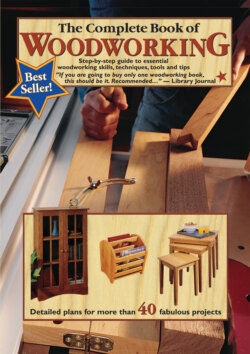Читать книгу Draw Manga - Tom Carpenter - Страница 21
На сайте Литреса книга снята с продажи.
Cuts of Lumber
ОглавлениеMills saw lumber in a variety of ways, depending on the intended use of the boards and the species and quality of the logs. The most common cuts are plain-sawing and quartersawing. Plain-sawing (also called flat-sawing) involves cutting the log to maximize lumber without including the center pith area. The log is rotated to make successive series of cuts around the pith. Plain-sawing produces lumber most economically for both the mill. It is suitable for most construction and woodworking purposes, but since the cuts are made tangentially to the growth rings—the direction of greatest wood movement—the lumber is more prone to distortion than quartersawn lumber. (For more on wood movement, see here).
Plain-sawn lumber is cut so the growth rings run tangentially to the board faces, producing a wider, wavy grain pattern. The growth rings on quartersawn lumber, on the other hand, run radially to the board faces, resulting in a tigher, parallel grain pattern.
LUMBER DRYING METHODS
Air-drying: Short lengths of scrap wood, called stickers, are inserted between each board in a stack to allow air to circulate all around the boards. The stacks are left to dry fully exposed to the elements, are covered up or stored in open sheds for months or even years at a time. Without stickers, green lumber will dry unevenly or attract mold and slowly decompose.
Kiln-drying: Once stickered lumber is loaded into a kiln, the kiln is closed up and heated evenly for several weeks until the moisture inside is reduced to acceptable levels. Drying time will vary depending on wood species and the grade of lumber. Kiln-drying is a faster method of producing general-purpose lumber, and kiln-dried boards are what you’ll find at all discount lumber outlets and home centers.
Quartersawn lumber is made by first sawing the log along its length to create four wedges. These are then ripped so the growth rings run more or less perpendicular (radially) to the board faces. Quartersawing yields boards with close, tight, straight grain. In some hardwoods, like oak, it also exposes beautiful, translucent medullary rays that have been coveted by woodworkers for generations. The downside to quartersawing is that it produces less lumber per log than plain-sawing, making the lumber more expensive to buy. Generally, quartersawn hardwoods are more common to find than quartersawn softwoods.
